The Barry family in Port Melbourne
Helen Barry writes:
My great grandfather, Robert Clarke Barry, first arrived in Sandridge in 1866 as a 17 year old seaman.
Robert was born about 1849; the son of Henry Clarke Barry, a shipmaster and Johanna O’Connor, both from Ireland. His father worked the coastal areas of England. Robert was born at sea in England as the family had no permanent land address.
After sailing to Sandridge for the first time as in 1866 he continued to sail the round trip to England for the next 10 years bringing migrants and many heading for the gold fields.
Robert’s sea life ended when, on one of his voyages to Sandridge, he met Adeline Doyle, a servant girl from Emerald Hill.
They were married by Reverend Kerr Johnston on 23rd October 1875 at his home in Leigh Terrace ‘according to the custom of Scotch churches’ as it says on his marriage certificate.
(Reverend Johnston was the first Chaplain of the Bethel church which operated from a hulk called The Emily moored off Sandridge. When the hulk burnt down and sank the Rev. Johnston and his family, who had been living on board, moved to the house in Leigh Terrace before the Mission to Seamen was built on the corner of Beach and Nott Sts.)
Robert and Adeline settled in Stokes Street and over the next 17 years had nine children, the first being my grandfather, Henry Richard Clark Barry in 1876. Robert became a ‘lumper’, unloading cargo from fishing boats. In 1888 he became a dairyman, a line of work which was to span three generations.
Robert and Adeline’s children attended St Joseph’s Catholic School on the corner of Rouse and Bay Streets. Adeline died of thrombosis in 1893 after her last child was born. Robert was left with eight children and a new baby.
Soon afterwards he had an accident where he lost an eye and sustained severe head injuries affecting his memory. He struck road metal and clay in a heap while driving his horse and cart near Glover and St Vincent’s Streets, Albert Park. Sir Frank Madden sued the South Melbourne Council on his behalf and he was awarded damages of £1,259 pounds. It was later taken to the Supreme Court and he lost the case.
One of the Judges stated that the street was repaired in an improper manner by a person who had the right to make a hole in the street under provisions of the Water Act 1890 for making a connection from the water mains to his property. The decision was that “the individual who opened up the road and left it in disrepair was negligent and the South Melbourne Council under the Local Government Act had no obligation if the work undertaken by the individual left the road in an unsafe condition”.
This case was cited in many Victorian country newspapers and the Age under the heading “Dangers of the Road”. It became a landmark case as there were many City Councils facing similar litigation.
In 1896 Robert bought a home for his family, at 52 Bridge Street – a timber house with 5 rooms, 27 ft frontage with stabling behind, borrowing £70 from the Salisbury Lodge (part of the Druids Society).
Unfortunately Robert died intestate at age 51 leaving my grandfather Henry aged 25 in charge of the family. In 1902 the home, as well as the horse and cart for delivering milk, had to be sold, dispersed to the trustees. Stabling and other conveniences were also attached to the building.
This was the start of many moves renting property around Port Melbourne for the family which included 59 Evans Street, 171 Ross Street, 250 Esplanade East. Henry abandoned the milk business for a while and worked as a newsagent, a boatman and a motorman to support the family.
Despite his responsibilities Henry met my grandmother, Nellie Adelaide Hall, a country girl from Heathcote, and they were married in 1905 at St John’s church, in La Trobe Street, Melbourne.
The newlyweds lived in 59 Evans Street along with three of Henry’s siblings. After many moves Henry bought 68 Ingles Street in 1925, which became their permanent home as well as a dairy called “Barry’s Ideal Dairy”.
68 Ingles Street was a two storey dwelling with a milk bar in front (now a garage) where Dad’s mother Nellie and sister Bernice sold milk into jugs that customers brought with them. The dairy was at the rear of the long lane that separates nos. 68 and 70 Ingles Street (now called Dairy Lane). The horses and drays used to deliver milk were kept at the end of the lane to the left. To the right behind the dwelling was the dairy.
Grandma Dairy, as we used to call her, had been a member of St John’s in Heathcote and joined Holy Trinity Port Melbourne, which started our long association with the church in Bay Street.
My dad had a milk round at the age of 12 despite still going to school. He attended Nott Street State School and studied at South Tech. to become a boiler attendant. However, the skills he learned at the South Tech were put aside while he worked in the dairy. When his father died in 1951 Dad had the responsibility for the family business and his mother and sister and continued to operate the dairy from 68 Ingles Street, delivering milk and cream to local residents and ships in port.
He recollected that during the depression many people could not pay their milk bill. Half the debts were never recovered and other customers paid at the rate of several shillings a month for up to 2 or 3 years after the end of the depression.
As Dad said in the book A History of Port Melbourne, ‘We couldn’t stop supplying people with young families with milk just because they could not pay”. I also remember my father saying that some paid with fob watches and jewellery.
My father Norman met my mother, Rose Welsh from Albert Park, at the Masonic Hall in Liardet Street in 1933 at Charlotte Scott’s 21st birthday. (Charlotte became Charlotte Scobel.) They married at St Silas church, Albert Park on the Queen’s Birthday weekend in 1940. They managed a brief honeymoon at Lorne, only to run into a busload of his customers from Port Melbourne who were away for the weekend.
Dad bought a new Bank House in Howe Parade in 1938 ready for his new bride. Mum’s mother, who was born in Port Melbourne, was disappointed to think that my mother had moved back here as she felt she had ‘improved’ herself moving to Albert Park.
As a young man, my father was physically fit, a proud citizen of Port Melbourne, a keen follower of the Borough and a member of the Life Saving Club. He entered the famous three mile swim of the Yarra in 1928 and trained for the event by swimming between Station and Princes Pier. The race started at the Twickenham Ferry, now the MacRobertson Bridge in Burnley to Princes Bridge. In 1929 it set a world record for the number of competitors and 100,000 people lined the banks to watch.
Dad sought election to the Port Melbourne City Council on two occasions. The first time in 1950 to replace Mr Griffin and the second in 1951 to replace Mr Turner but he was unsuccessful both times.
His work during the war providing milk to families and industries at home and as well to the many ships that called into port was considered an ‘essential service’.
He was a familiar sight on the wharf ; dressed in his Yakka overalls with a large milk can on his back. He would stand at the gang plank – a shaky wooden set of steps held together by chains at an angle on the ship’s side, contemplate the distance in front of him and with head down would charge up at a rate of knots only stopping when he reached the top.
The customs people knew him well – he had many breakfasts on their launches – or with Chinese crews or officers of whatever nationality on the ships he served with milk. He would often give them extra cream while they responded with small gifts from the Orient. Many times my mother Rose fed lonely officers that Dad had befriended on ships and brought home for a meal.
He was very pleased and proud when Wendy Morris, our former city librarian, asked to interview him for a book entitled They can carry me out: Memories of Port Melbourne. His recollections of the building of the Centenary Bridge over Station Pier are included. Wendy used his experiences as a businessman in Port Melbourne during the great depression for her Masters Thesis. Both A History of Port Melbourne and They can carry me out were among his prized possessions.
In the late 1950’s the smaller dairies were faced with many changes, including zoning restrictions. The Barry’s Ideal Dairy combined with a number of local dairies (Spains, Stuart’s and Barry) to form Superior Dairies at a new factory at Bridge and Derham Streets, which became one of the largest dairies of inner Melbourne.
68 Ingles Street was sold. My father built a house for his mother and sister at Heathcote and they returned there to live.
It is interesting to note that our name was always Clark Barry. Even when my mother came to Port Melbourne as a young bride in the 1940’s she was still addressed as Mrs Clark Barry. But somehow this was dropped.
I was in Faram’s before Mr Faram died and when I told him who I was he said: “I knew your grandfather, “he was a good man”.
I think all the Barry men were good men, supported by good women.
You might also like this article about Helen’s mother, Rose Barry, who was a milliner – A Melbourne Cup Special.

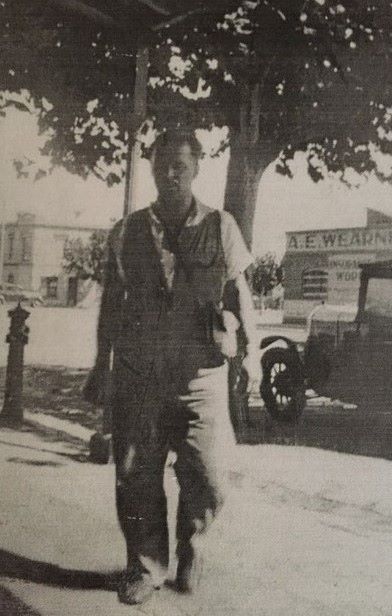
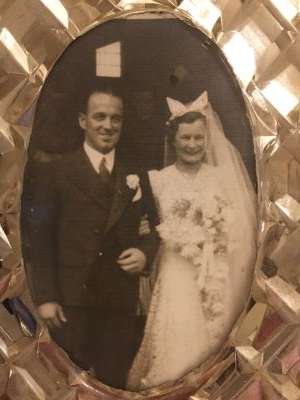
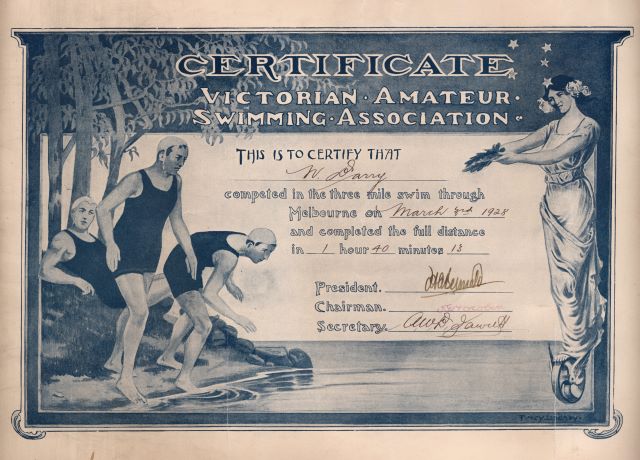
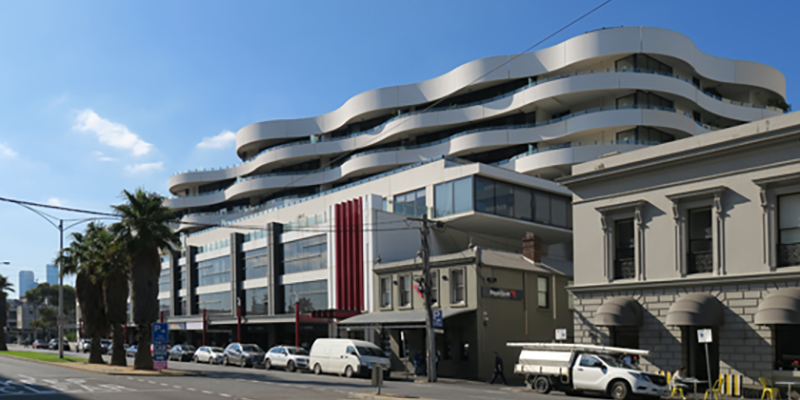
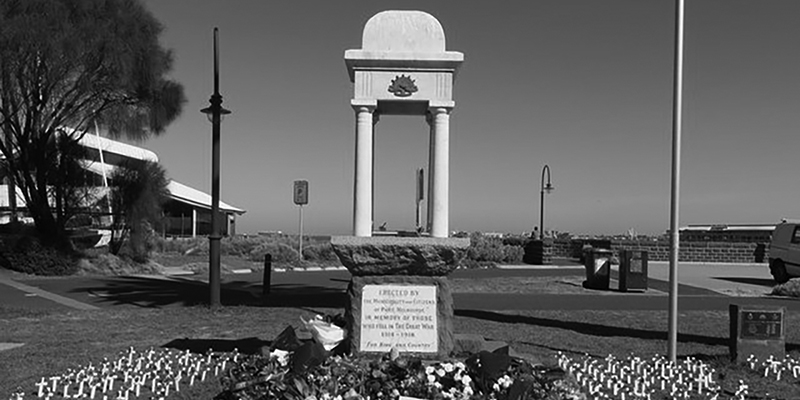
3 Comments
Chris Anderson
Thoroughly enjoyed this precious story of the past.
Cheers chris
Vicki Jutson
I also enjoyed these wonderful memories. My grandfather was William Reaburn (Ray) Stuart of 312 Ross St, who shared many stories of his dairyman days, mentioning Barry’s Dairy with great fondness.
David Thompson
Thank you Vicki,
Raeburn Stuart’s son, Glen, was a very dedicated and much-loved member and volunteer with PMH&PS. Glen could identify any ship that ever came to Port Melbourne and we made good use of his expertise. He also told us about his father working at Woodruff’s Dairy in Bridge St, not far from the house in Ross St and the Gladsdale Dairy established by your great-grandmother on the corner of Bridge St and Williamstown Rd. We have a few pictures of Raeburn in our collection. One with him with his horse ‘Goatie’ and milk cart outside the milk bar on the corner of Ross and Bridge Sts https://victoriancollections.net.au/items/60641a6c175fecd3b2dbffc7 and another similar one https://victoriancollections.net.au/items/60641a6c175fecd3b2dbffc8. We also have one of him with a milk churn when he worked for Woodruff’s c1920. https://victoriancollections.net.au/items/60641a6c175fecd3b2dc08a7.